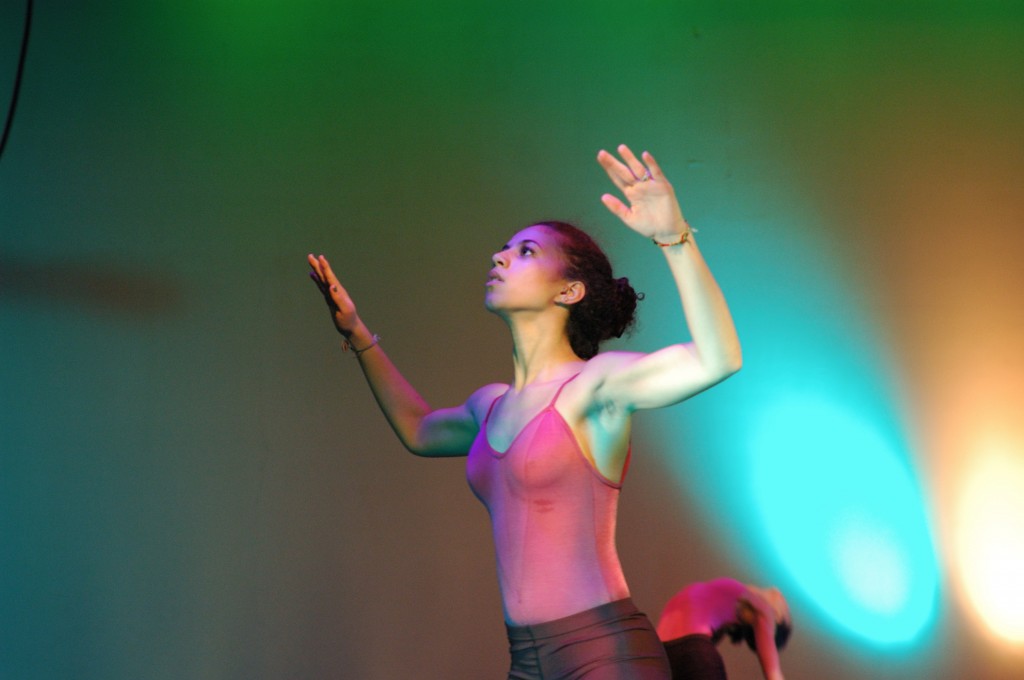
by Lauren Warnecke, MS
A choreographer does not a teacher make, and vice-versa. There seems to be a divide between the teachers and the dancemakers (perhaps as there should be), but at the end of the day, the dance teacher needs to be able to choreograph and the dance maker needs to be able to teach. At the student level, this logic makes total sense, because learning choreography is part of the student dancer’s training, and, most often, her teacher rather than a professional choreographer is teaching the dance.
At the pre-professional/professional level, the expectation to pick up quickly, and without much guidance, is astronomically higher. Studio space is expensive, and it’s the dancers’ jobs to learn movement regardless of the choreographer’s ability to teach. Picking up quickly is, in some sense, also a way to weed out dancers from the hundreds that are gunning for the one spot you have open in your company.
Look, I get it.
But I would also argue that utilizing solid teaching methods in the studio could make for a more efficient, less frustrating rehearsal process. Plus, you’re more apt to get what you really want out of the dancers.
There are three ways in which people learn: visual, auditory, and tactile cues. Some people learn through watching a demonstration, others by listening, and still others by doing. This is, in part, why traditional schoolrooms (trying to learn math by listening to a teacher talk and then writing out standardized tests) don’t work that well… but I digress.
In order to best your chances of the dancers picking up movement quickly, you should accommodate for all three learning styles. Say what it is, demonstrate it, and allow ample time for practice. Delivering information in smaller sections helps too, but more on that later.
In the current piece I’m working on, I have three dancers, each with really different learning styles. Katie likes to talk it out and take notes; Vienna watches me intently and then repeats it barely batting an eye, and Laura likes to practice and let the movement sink in throughout the rehearsal. All three of them pick up movement at about the same rate, because I don’t cater to one learning style over another. I could sit in a chair and talk, but I’d get really frustrated with Vienna. I could demonstrate and expect them to run it right away, but then Laura would feel lost. The choreographer has a certain amount of responsibility for observing the ways her dancers learn. If all you want to do is sit in a pair of jeans and talk the dancers through it then be prepared to fire them in droves until you’ve found ones that learn best through listening.
Chunking is another method that makes the rehearsal process smoother. Naming sections of your dance makes it easier to pick up from the middle; this is especially helpful when dealing with a longer piece. When the dancers have a reference like “Go to the ‘Fields and Flowers’ section”, they’ll know exactly what you mean instead of needing to have a long-winded discussion about it.
Aside from cueing a particular place in your dance, chunking is good for the teaching phase of the process too. Believe it or not, chunking is not just a word I made up… it’s an actual scientific thing! We (meaning people in general) remember things in small doses:
That’s why phone numbers are subdivided into three parts.
Social Security Numbers and credit card numbers are too.
And chunking is why you’ll probably remember these three sentences in this article more than anything else (get it?!? They’re chunked).
So when teaching a longer phrase, it’s best to subdivide into somewhere in the ballpark of 5 steps, and then go back and add the next five steps, repeating what you’ve already learned.
Educational psychology aside, when teaching new movement I continually use analogies, metaphors, onomatopoeia, and, when all else fails, ballet. Don’t get me wrong, I’m a proponent of renaming and reinventing steps to become something new – I mean, that’s what modern dance is all about. What was a pleading, after all, before Martha came along and named it?
So, yes, rock on with your new steps called “shoo” and “tacka” and “giggly cow”.
But, I’m also a huge fan of reverting to things that we know for points of reference. For many of us, that’s ballet technique. I like to compare ballet to Starbucks, or the Catholic Church. Go to any location in the world and you’ll pretty much know what to expect. A latte is a latte, and an assemble is an assemble. Now, you might be doing that assemble upside down, on one shoulder, with your thumb in your mouth, but using familiar ballet terminology can really help get your point across when faced with a bunch of blank, not understanding faces.
Ultimately, none of the above matters if you don’t really know what you want. I’ve been told that I’m fast in the studio. I can whip out a nine-minute dance in about six hours (I flatter myself), and it’s not because I fear attention to detail or a long creative process. I feel a certain amount of responsibility for going into a rehearsal with a plan – even if I don’t have every step worked out, or any of them, for that matter! There are plenty of choreographers who rely solely on their dancers for movement invention. Not that there’s anything wrong with that, but at the end of the day (or the rehearsal) you’re the boss. It’s your vision that the dancers are creating, and if you don’t know what that is you’ll find a lot of studio time wasted. At upwards of $25 an hour, I can’t afford to mess around with rehearsal time (but this, in part, is another conversation entirely).
Learn how your dancers learn, chunk, use analogies, and know what you want. These are my best tools for effectively teaching choreography.
What are yours?

Contributor Lauren Warnecke, M.S., is a Chicago-based dance artist, educator, and writer. She trained at the Barat Conservatory of Dance before earning a BA in Dance at Columbia College Chicago. In 2009, Lauren completed her MS in Kinesiology at the University of Illinois at Chicago, with a concentration in Motor Control and Learning. Lauren is a Visiting Instructor for the department of Kinesiology and Nutrition at UIC, and teaches master classes and seminars in ballet, modern dance, creative movement, and dance pedegogy. She is certified in ballet by the Cecchetti Council of America and a member of the American College of Sports Medicine.
In addition to teaching at UIC, Lauren owns and operates Art Intercepts, under which she creates, informs, and writes about dance. The primary mission of Art Intercepts is to bridge the gap between the scientific and artistic communities to present programming that is informed, inventive, and evidence-based. Lauren is a freelance writer/blogger and maintains monthly columns at Danceadvantage.net and 4dancers.org. and is featured on a panel of nationally reputed dance writers at the 2012 Dance/USA conference. She also works periodically as a grant writer and production/stage manager for artists in the Chicago dance and performance community, and volunteers for initiatives encouraging Chicagoans to engage in local, sustainable, and active lifestyles. Lauren likes to hike, bake scones, and dig in the dirt.





Nice job Lauren! I really enjoyed reading it!
This is totally true! I had never actually choreographed a dance until just recently and it totally opened my eyes. I definitely have a new respect for my dance teachers and how much hardwork they put in to make up many different dances. My old teacher would make up over ten dances right before recital and I had a hard time only making up one. I noticed myself starting to sound like my old teachers as I was teaching this one dance. I would yell random words that represented motions at all times during practice, so you’re definitely right about that one.
Thanks for the great insight, Lauren! I love the concept of chunking, never thought of it that way before. I could definitely use that for my show choreography. I have such respect for choreographers who work in modern dance – watching a friend of mine work, I see her use funny phrases for some of her movement that can’t be id’ed with ballet terminology. It’s so descriptive for the dancers. We could do that in ballet!
~Leigh
Thanks for the comments! Glad to hear that these ideas are resonating 🙂
Chunking is amazing! I use it with my littles too, I love the way you explained it! Great article and such fab writing! xo